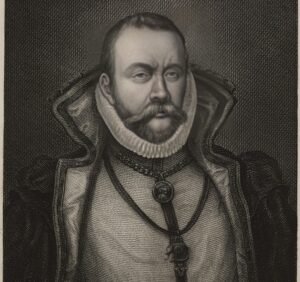
In an unexpected twist of scientific history, researchers have uncovered a surprising element in the remnants of renowned astronomer Tycho Brahe’s alchemy lab. This discovery has sent shockwaves through the scientific community, raising new questions about the enigmatic practices of alchemy and the early understanding of elements. In this article, we delve into the details of this astonishing find, explore the historical context of Brahe’s work, and examine the implications for modern science.
The Discovery: An Unexpected Element
The Unveiling
In a recent excavation of Tycho Brahe’s alchemy lab, located on the island of Hven, scientists stumbled upon traces of an element that was not known to have been identified during Brahe’s time. Using state-of-the-art analytical techniques, researchers identified traces of Platinum, an element that was officially discovered in the 18th century. This revelation has baffled historians and scientists alike, as it suggests that Brahe may have been experimenting with substances far ahead of his time.
Analytical Techniques and Methods
The discovery was made using advanced spectroscopy and mass spectrometry. These methods allowed scientists to precisely identify the elemental composition of residues found in Brahe’s laboratory equipment. The presence of platinum, along with other metals, suggests that Brahe’s alchemical experiments may have been more sophisticated than previously thought. The meticulous nature of this analysis provides a rare glimpse into the chemical knowledge and practices of the late 16th century.
Tycho Brahe: The Alchemist and Astronomer
A Brief Historical Context
Tycho Brahe is most famous for his meticulous astronomical observations and his impact on the understanding of planetary movements. However, he was also deeply involved in alchemy, a discipline that sought to transform base metals into noble metals and discover the elixir of life. Alchemy, though often dismissed as a pseudoscience, was a precursor to modern chemistry.
The Alchemical Lab on Hven
The alchemy lab that Brahe built on the island of Hven was a cutting-edge facility for its era. It was equipped with furnaces, glassware, and various chemical substances. The lab served as a center for Brahe’s alchemical experiments, where he explored the properties of metals and other materials. The recent discovery of platinum raises intriguing questions about the nature of these experiments and the extent of Brahe’s chemical knowledge.
Implications and Theories
Revisiting Historical Assumptions
The presence of platinum in Brahe’s lab challenges previous assumptions about the history of chemistry and alchemy. Traditionally, it was believed that platinum was first identified and isolated in the 18th century by Spanish explorers in South America. The discovery in Brahe’s lab suggests that there may have been an earlier, albeit unrecorded, awareness of the metal in Europe. This revelation could prompt historians to re-evaluate the timeline of chemical discoveries and the global exchange of knowledge during the Renaissance.
Theories on the Origin of the Platinum
Several theories have emerged regarding how platinum ended up in Brahe’s alchemy lab. One possibility is that Brahe, known for his extensive network of contacts across Europe, may have acquired the metal through trade or correspondence with other alchemists. Another theory suggests that the platinum could have been an accidental byproduct of his experiments, possibly involving gold and other precious metals.

The Intersection of Alchemy and Modern Science
Alchemy’s Influence on Chemistry
The discovery of platinum in Brahe’s lab underscores the important, albeit often overlooked, role of alchemy in the development of modern science. While many alchemical practices were based on mystical and philosophical ideas, they also involved rigorous experimentation and observation. The surprising find in Brahe’s lab serves as a reminder of the interconnectedness of science and the humanities in the pursuit of knowledge.
Future Research and Exploration
This unexpected discovery has opened new avenues for research into the history of science. Scholars may now look to other historical alchemical texts and laboratories for evidence of early knowledge of elements and materials. Further study of Brahe’s writings and other alchemical records could provide additional insights into the methods and materials used by early scientists.
Conclusion
The discovery of platinum in the remnants of Tycho Brahe’s alchemy lab is a groundbreaking revelation that challenges our understanding of the history of chemistry and alchemy. As researchers continue to unravel the mysteries of Brahe’s work, we gain a deeper appreciation for the contributions of early scientists to the modern world.
visit American Pulse.
For more information, visit this link.
Suggested Tags
Tycho Brahe, alchemy, platinum discovery, history of chemistry, Renaissance science, alchemical experiments, Hven island, historical discoveries, scientific history, modern chemistry, early scientists
